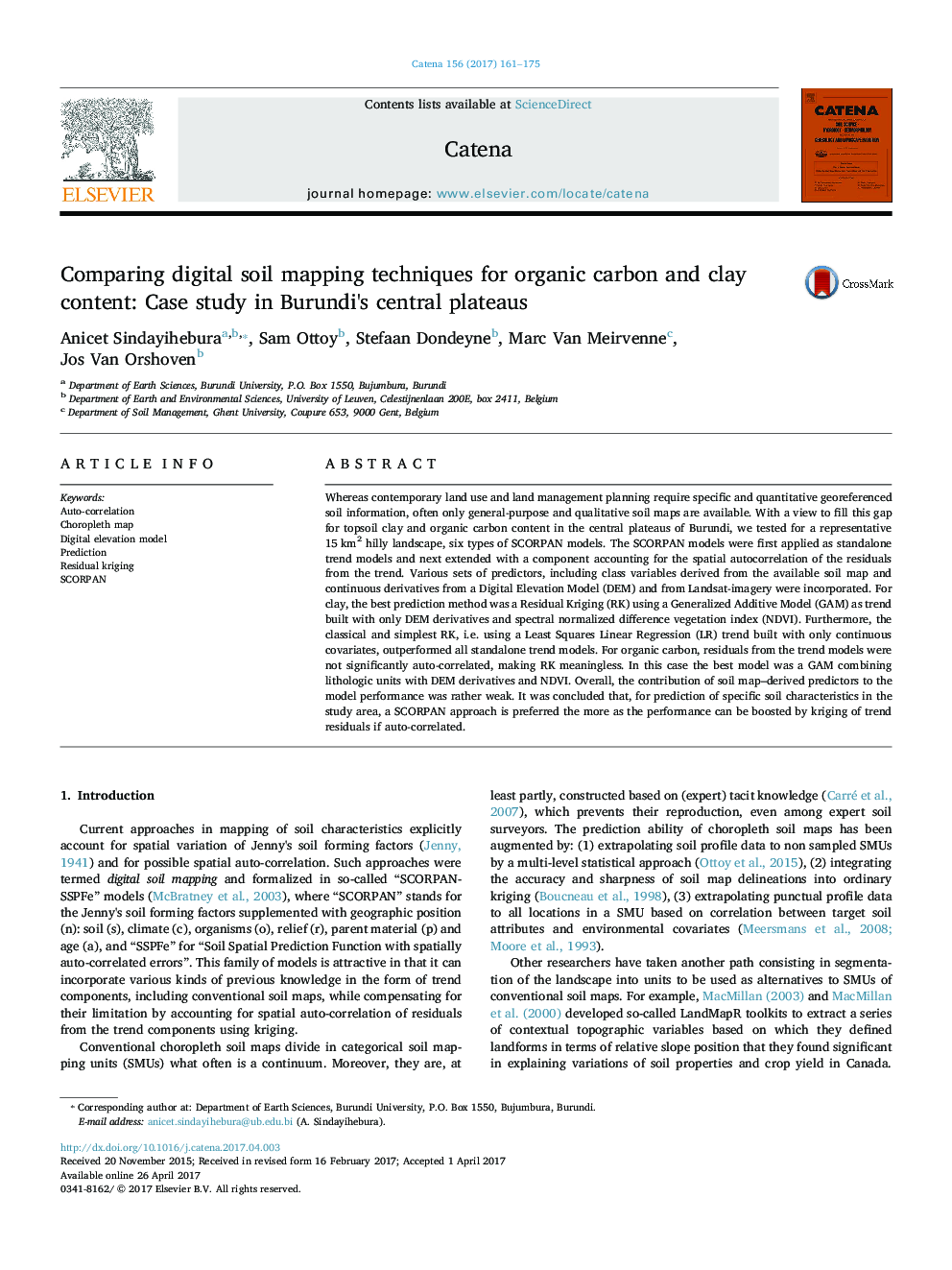| Article ID | Journal | Published Year | Pages | File Type |
|---|---|---|---|---|
| 5769992 | CATENA | 2017 | 15 Pages |
â¢We compared OC and clay prediction models for a case study in Burundi.â¢Models accounting for lithology outperformed those based on soil map components.â¢Clay% was best predicted with Residual Kriging using GAM trend.â¢OC% was best predicted with GAM as trend residuals were not auto-correlated.â¢Accounting for auto-correlation in residuals is critical for predictive modeling.
Whereas contemporary land use and land management planning require specific and quantitative georeferenced soil information, often only general-purpose and qualitative soil maps are available. With a view to fill this gap for topsoil clay and organic carbon content in the central plateaus of Burundi, we tested for a representative 15Â km2 hilly landscape, six types of SCORPAN models. The SCORPAN models were first applied as standalone trend models and next extended with a component accounting for the spatial autocorrelation of the residuals from the trend. Various sets of predictors, including class variables derived from the available soil map and continuous derivatives from a Digital Elevation Model (DEM) and from Landsat-imagery were incorporated. For clay, the best prediction method was a Residual Kriging (RK) using a Generalized Additive Model (GAM) as trend built with only DEM derivatives and spectral normalized difference vegetation index (NDVI). Furthermore, the classical and simplest RK, i.e. using a Least Squares Linear Regression (LR) trend built with only continuous covariates, outperformed all standalone trend models. For organic carbon, residuals from the trend models were not significantly auto-correlated, making RK meaningless. In this case the best model was a GAM combining lithologic units with DEM derivatives and NDVI. Overall, the contribution of soil map-derived predictors to the model performance was rather weak. It was concluded that, for prediction of specific soil characteristics in the study area, a SCORPAN approach is preferred the more as the performance can be boosted by kriging of trend residuals if auto-correlated.
